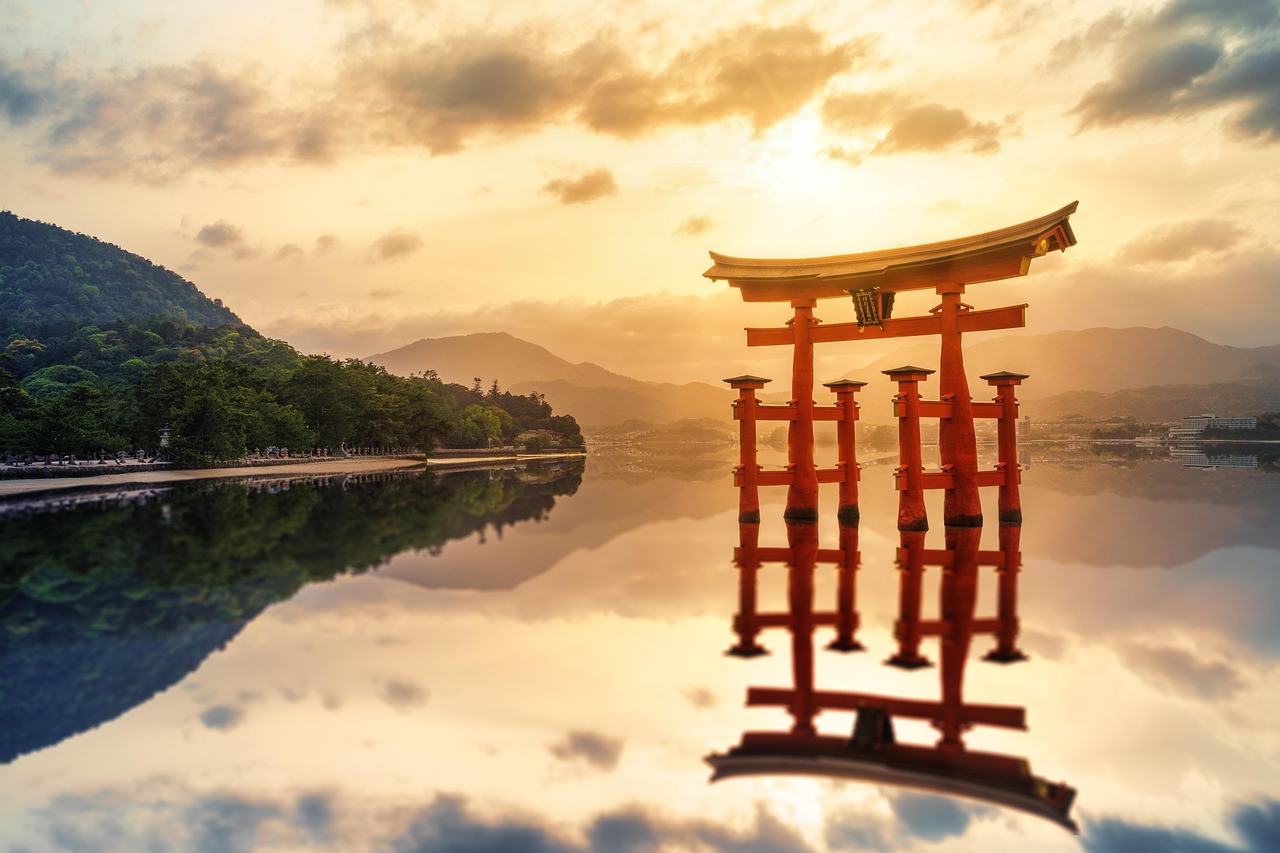In the southwestern part of Hiroshima Prefecture, nestled in the Seto Inland Sea, lies a small island called Miyajima. I first saw a photo of its sacred Itsukushima Shrine during a lunch break on a summer day. I was sitting at a café terrace in Paris, nibbling on a croque-monsieur, while a colleague who loved all things Japanese was scrolling through “Instagrammable spots” on social media. She turned her phone toward me. On the screen, a vivid red torii gate stood calmly above the sea.
“Wait—does that gate actually float on water?” I asked, incredulous.
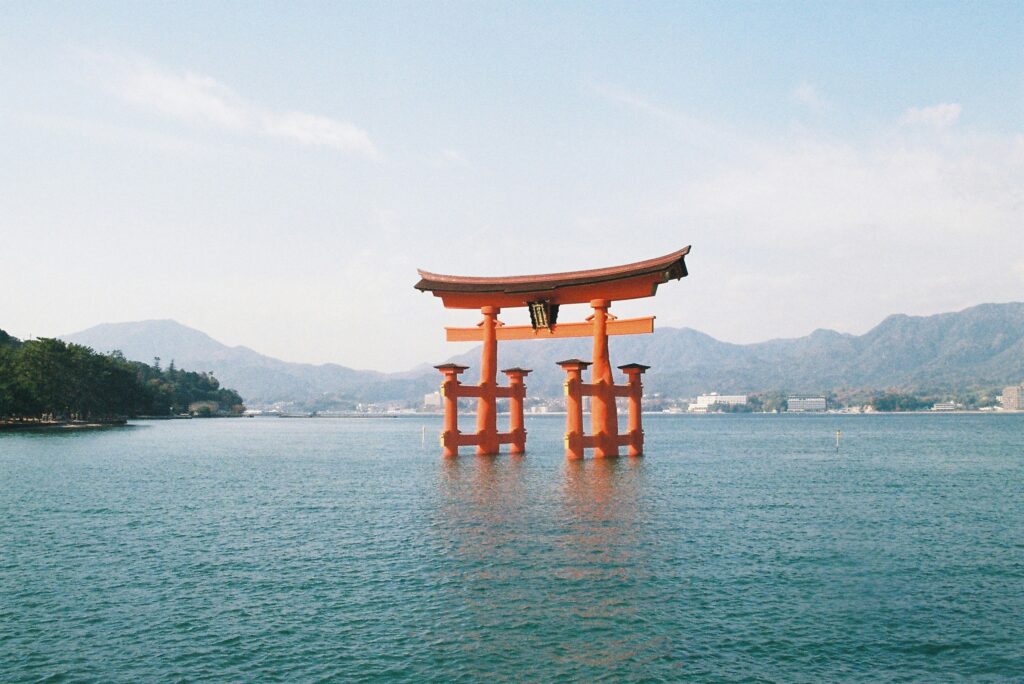
“It looks like it, right? The view changes completely depending on the tides,” she replied.
Even days later, the image lingered in my mind. Life in Paris was all about moving fast and optimizing everything—deadlines, efficiency, numbers. I had grown so focused on what I had to do that I had forgotten to listen to what my heart truly wanted.
Maybe that’s why the stillness in that photo captivated me.
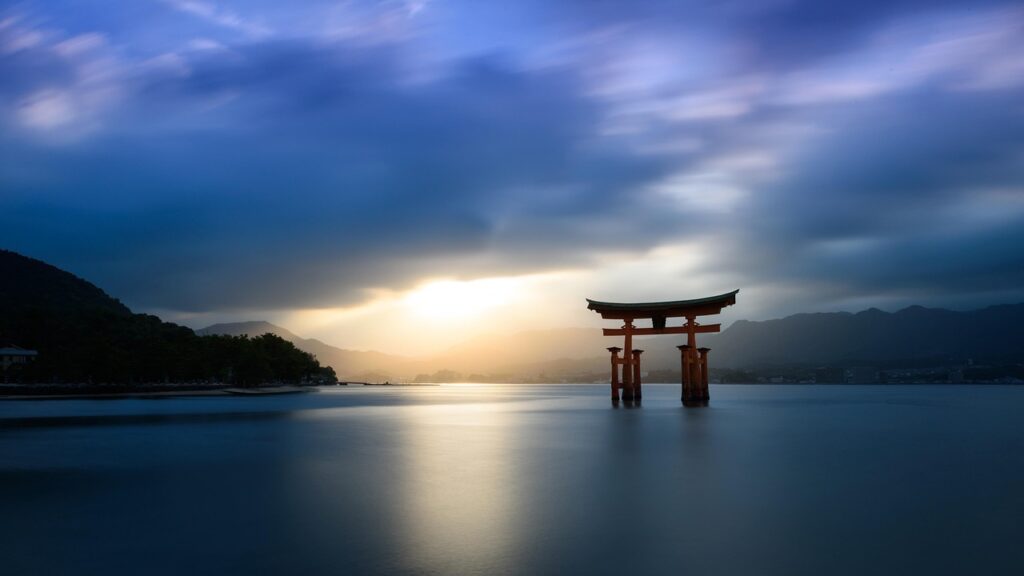
Why was the torii built in the sea? Surrounded by tides, appearing to float—it had to mean something. I wanted to understand.
A few weeks later, I landed in Japan at the height of summer. From Hiroshima Station, I traveled to Miyajima by train and ferry. As the ferry pulled away from the shore, I spotted the red torii rising from the calm waters of the Seto Inland Sea. Bathed in sunlight, the surface shimmered, and the gate appeared to exist beyond time—larger and more majestic than I had imagined, yet quietly gentle. Behind it, the shrine’s main buildings stretched along the water’s edge, blending seamlessly with the sea, as if exhaling in a slow, sacred rhythm.
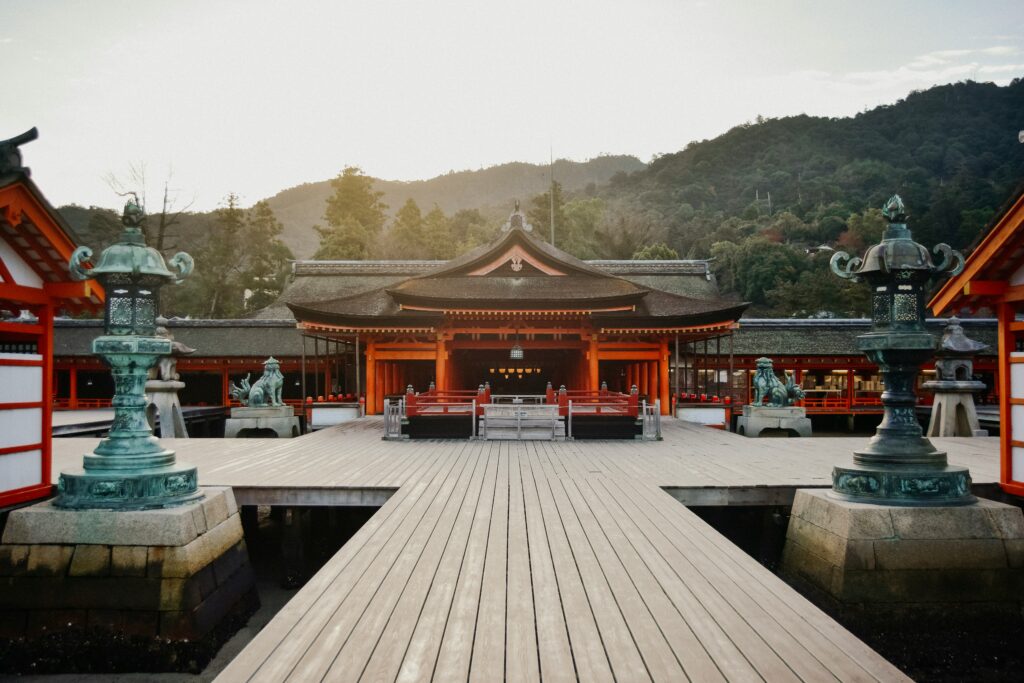
Stepping onto the island, I was met with a strangely nostalgic scent—salt, earth, and something warm and freshly baked. The first thing I saw was a deer. Unfazed by people, it walked slowly beside me down the path, like a local guide welcoming me.
Hungry, I wandered a bit and was drawn to a traditional townhouse-style building just off the port. A wooden lattice door and a fluttering noren curtain marked the entrance. Inside, it was cool and quiet, filled with the soft scent of wood. I ordered a local specialty: anagomeshi, grilled conger eel over rice. The sweet-savory glaze soaked into the tender eel, which rested neatly on fluffy rice. One bite, and the crisp grilled skin gave way to melt-in-your-mouth flesh, gently filling me with warmth. It was a taste so kind it felt like it was nourishing my soul.
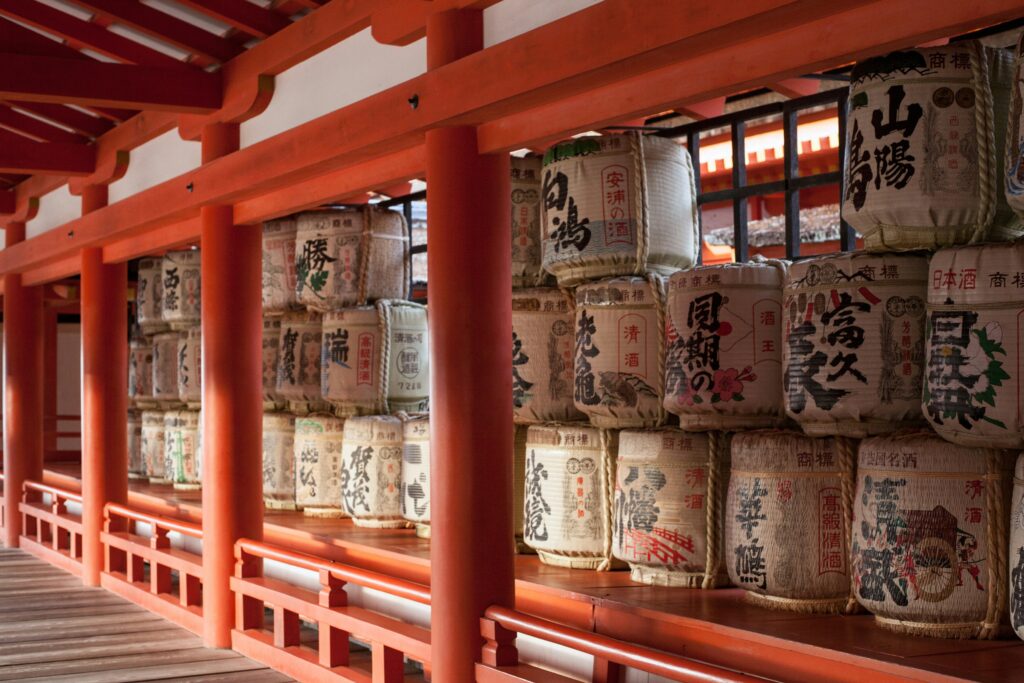
That afternoon, I took a ropeway up Mount Misen, the island’s central peak. From the summit, I could see the calm sea and scattered islands stretching out to the misty horizon. The breeze touched my skin. Cicadas sang in the distance. I couldn’t remember the last time I experienced such stillness.
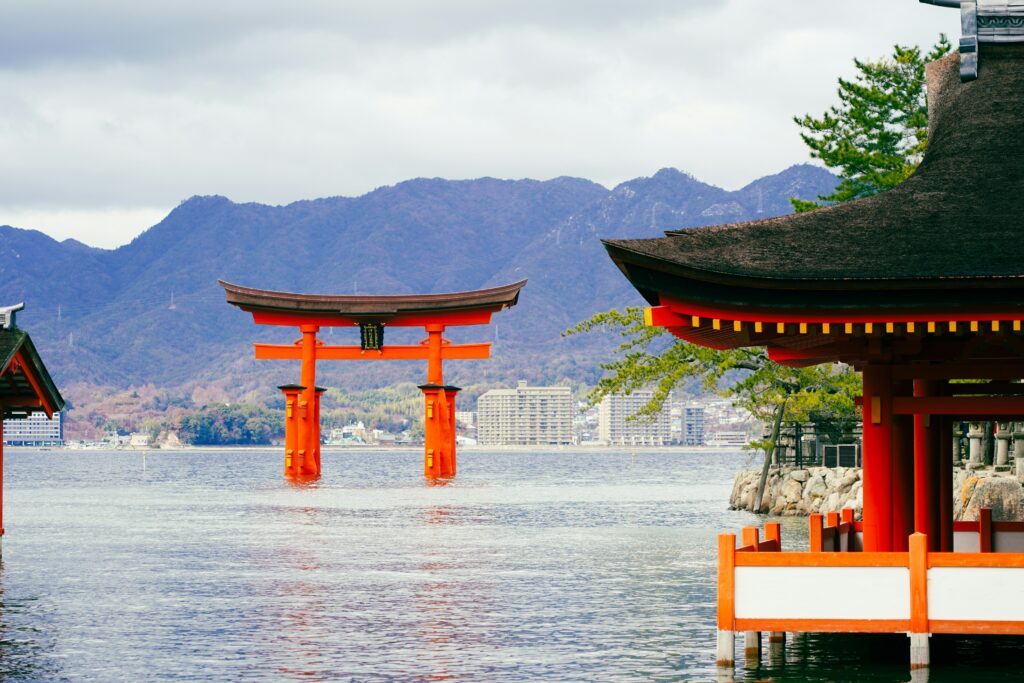
That night at my inn, I did some reading. Why is the torii in the sea? I discovered that the belief behind it is rooted in Japan’s ancient view of nature. The entire island where Itsukushima Shrine stands was once believed to be a deity itself. To protect its sanctity, people built the shrine over the water and placed the torii at its entrance—marking a boundary that should not be casually crossed.

The idea that divinity resides in the land itself feels different from many Western religious views. Here, God is not only in the heavens, but in the sparkle of waves, the outline of a mountain, the scent of wind. Immersed in such a world, I felt myself return to being part of nature.
The next day, I ventured into Hiroshima City to visit the Atomic Bomb Dome and the Peace Memorial Museum. In the Peace Park, children laughed as they played near the fountains.

Later, I traveled to the Yamato Museum in Kure, where the story of the legendary battleship and Japan’s shipbuilding history is told with care. Pride and sorrow—woven into life alongside the sea—lingered in my heart.
Returning to Miyajima at dusk, I caught the scent of something sweet and cool from a shop along the path. It was a tiny dessert café inside a renovated old house, with exposed wooden beams and soft summer light filtering through shoji screens. I ordered a tempura-fried momiji manju (maple-leaf-shaped cake filled with sweet bean paste) and iced matcha. The gentle sweetness of the red bean, the crispness of the batter, and the slight bitterness of the matcha created a harmony that made me smile.
Just then, my eyes met those of a woman seated nearby—around my age, wearing a simple white T-shirt and jeans, her sun-kissed cheeks framed by a warm smile.
“Are you traveling?” she asked.
Her voice was calm and assured, and something about her drew me in. She was a local, recently returned from Tokyo. Though she had built a career, she said she’d felt the need to pause.
“There’s nothing particularly new on this island,” she said. “But if you take your time, you start to notice the things that have always been here.”
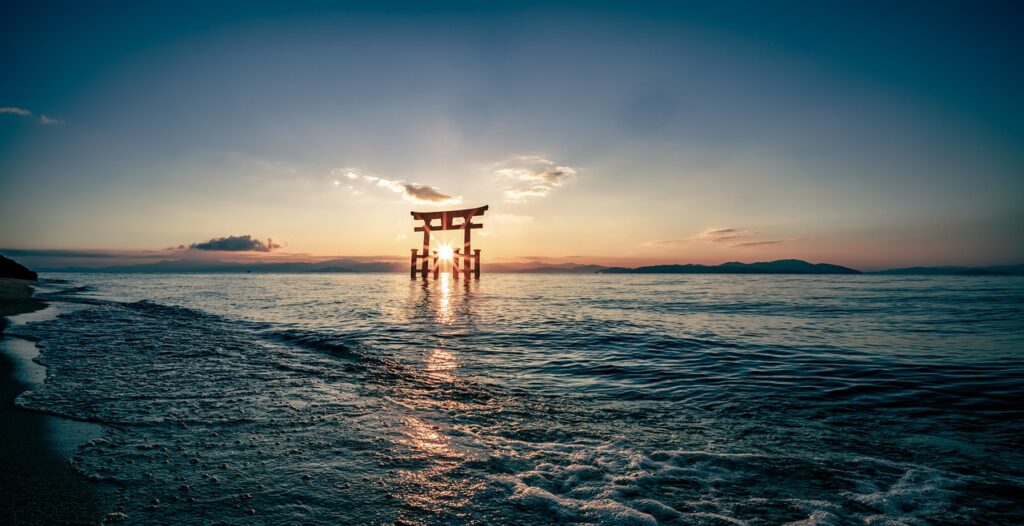
Her words stayed with me. In Paris, I had chased speed and efficiency. But here, taking time—moving slowly—seemed to hold its own kind of value. This trip taught me that even moments that seem “unproductive” can stir the soul. That there is beauty in surrendering to the scene before you without searching for meaning. That Japan holds a quiet, sacred beauty—in its nature, in its stillness, in the feeling that divinity lives among us.
At the journey’s end, I stood once more before the torii at sunset. The tide was high. The sun leaned west, painting the gate in shades of gold and crimson. The water mirrored the sky, and the gate’s reflection rippled gently.
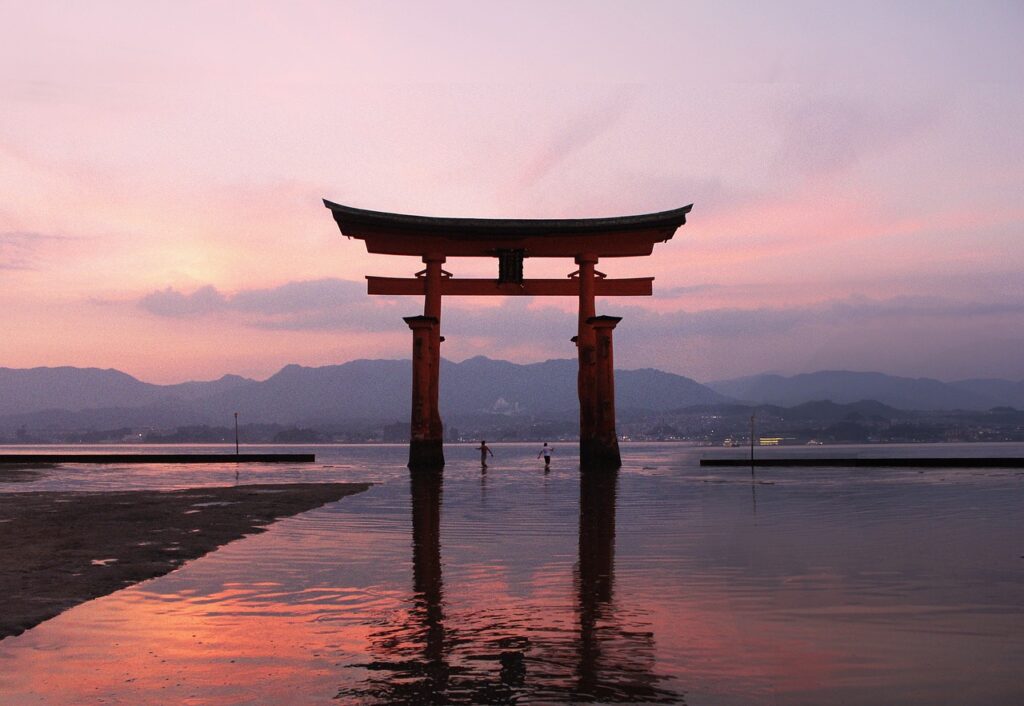
I couldn’t move. It wasn’t just beautiful—it was as though something vast had embraced me. A place where nature, humanity, history, and prayer come together. The realization that this sacred scene had remained unchanged for over a thousand years filled me with quiet awe.
Perhaps I hadn’t come here to “gain” something. Maybe I came to let go of what I was holding on to. The pace, the pressure, the endless pursuit of outcomes. In this stillness, I was reminded to question the speed of my own life.
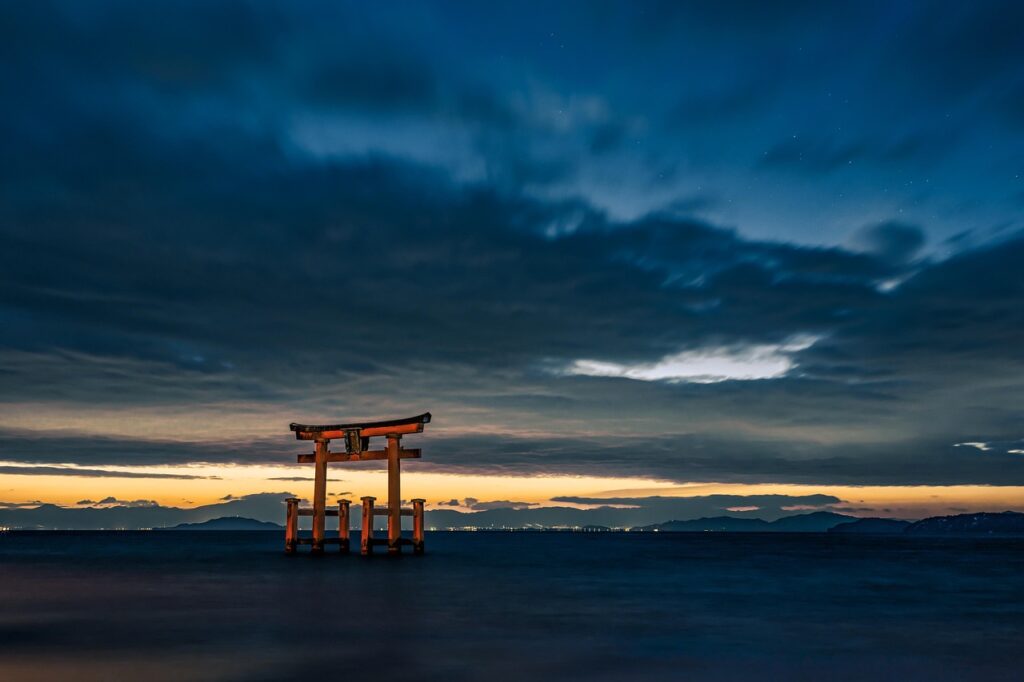
As night slowly fell beyond the torii, I felt a small part of myself return. The journey had ended, but the landscape—I knew—would live on inside me.
Something New Travel

